From neon backstreets to myth‑soaked mountains, these 10 essential games capture Japan’s past, present, and folklore in unforgettable ways.
10) Shenmue (1999)
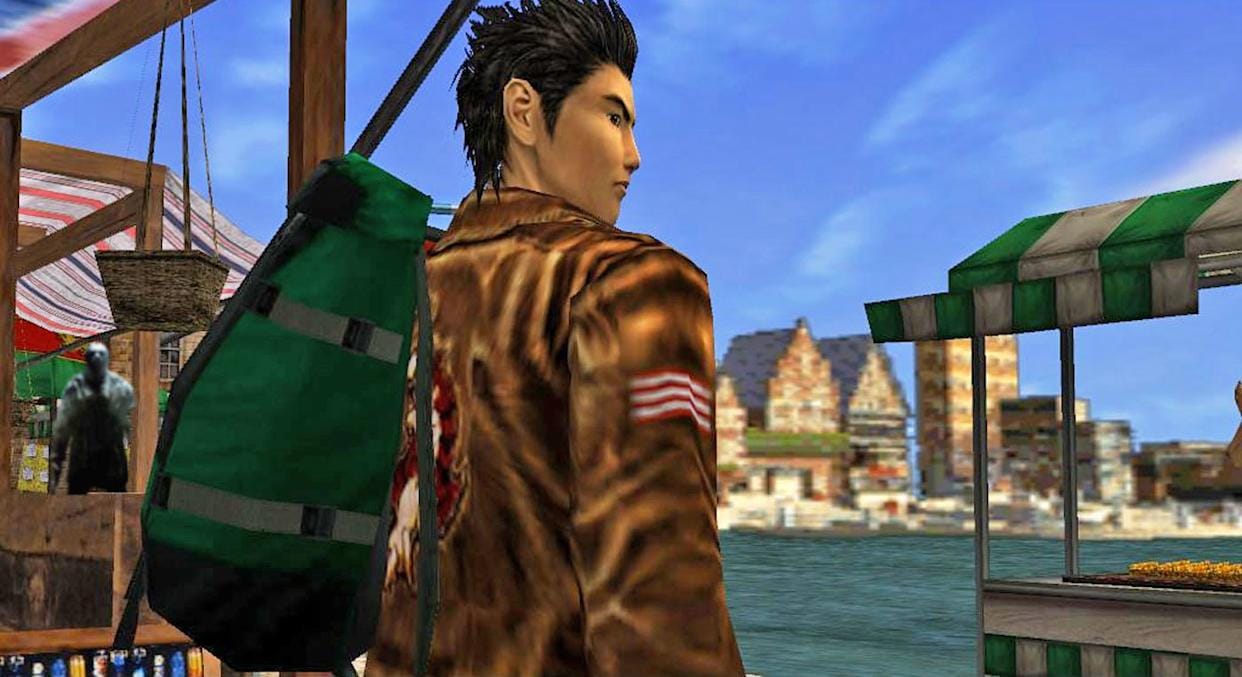
Shenmue is a slow, absorbing time capsule of 1986 Yokosuka that pioneered open‑world slice‑of‑life simulation. As earnest teen Ryo Hazuki, you hunt your father’s killer by asking questions, checking schedules, and learning the town’s rhythms: shopkeepers open and close, buses keep time, and gacha capsules become tiny obsessions. Fighting draws from Virtua Fighter’s moveset depth, yet the moments between scuffles define the mood—feeding a stray kitten, practicing in a snowy lot, part‑time forklift work on the docks. Every routine builds place and patience, making clues feel earned rather than dispensed. It’s not flawless—stilted dialogue and pacing wobbles persist—but its attention to mundane detail created the template later series refined. Crucially, Japan isn’t exoticized; it’s everyday: cramped homes, vending‑machine warmth, seasonal festivals lit by lanterns. Few games better evoke small‑town textures while maintaining a martial‑arts mystery that smolders. Shenmue rewards curiosity, kindness, and persistence more than raw stats—an enduring portrait of ordinary life in transition. It still feels quietly radical today.
9) Fatal Frame II: Crimson Butterfly (2003)
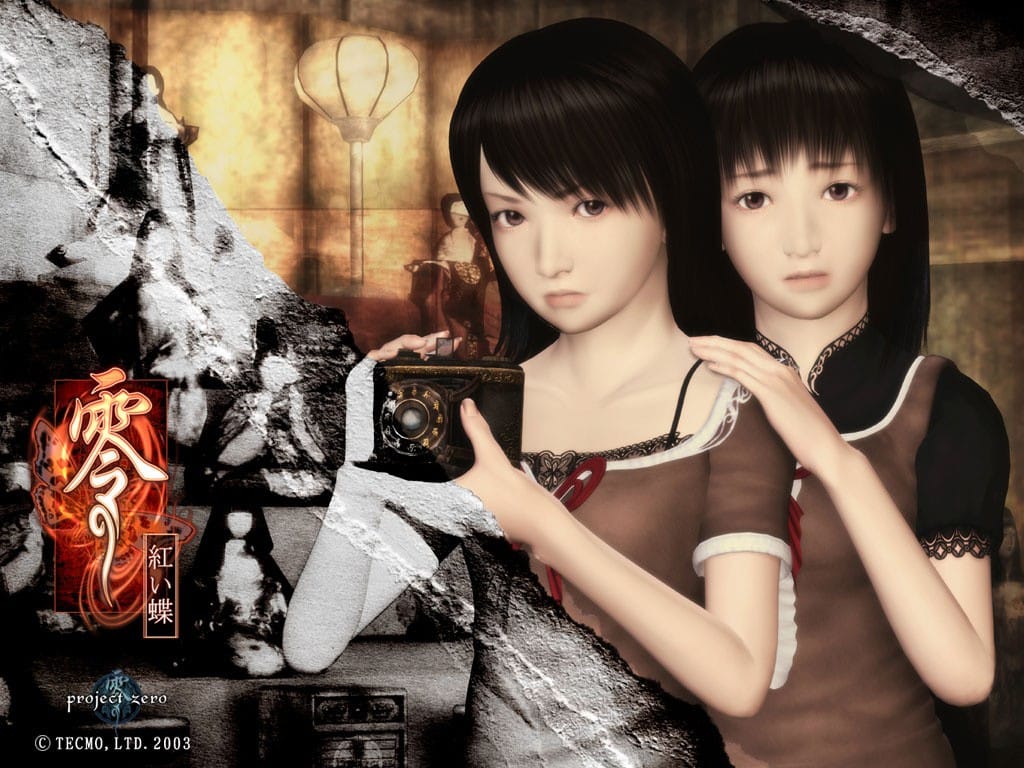
Fatal Frame II: Crimson Butterfly is Japanese folk horror at its most intimate: two sisters lost in a mist‑shrouded village trapped between ritual memory and restless spirits. Your only defense is the Camera Obscura, an antique device that exorcises ghosts by photographing them up close—terror becomes a mechanical risk, forcing you to stand your ground as apparitions lunge. Exploration is slow, deliberate, and claustrophobic, with puzzle‑locked houses stitched together by whispers, diaries, and photographic clues. Rather than cheap jump scares, dread builds from lullaby melodies, ink‑black corridors, and tragedies hinted more than shown. Encounters feel like stories; each named ghost has a sad history you gradually reconstruct, giving combat a somber purpose. Its depiction of rural rites and twin mythology is unmistakably Japanese, while the framing of family, duty, and sacrifice keeps the stakes human. Even today, few horror games use place this effectively—or make you willingly look through a viewfinder when every instinct screams to run into the dark.
8) The World Ends with You (2007)
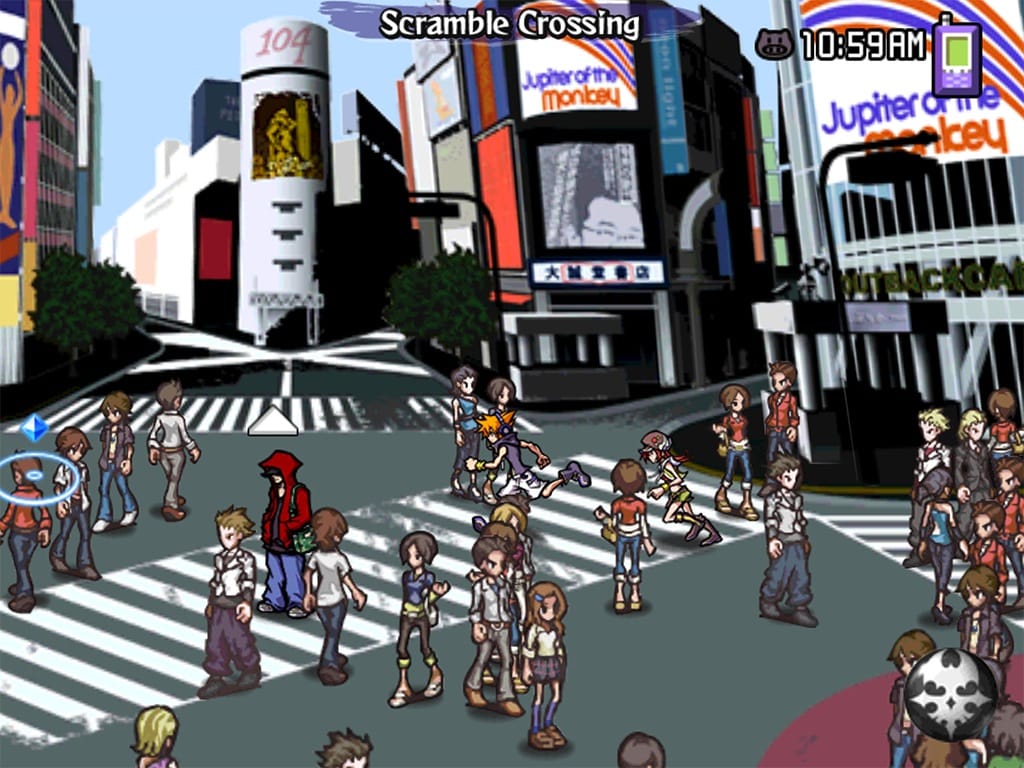
The World Ends with You turns Shibuya into a supernatural arena where the uncool and unseen fight for a second chance at life. As aloof teen Neku, you’re thrust into the Reapers’ Game, completing daily challenges on a strict timer while forming bonds with partners who crack your shell. Stylish touch‑driven combat (or modern control options in later ports) splits attention between two characters and pin‑based abilities you mix and evolve like streetwear. Few games capture a neighborhood’s rhythm this well: branding wars affect damage, trains set your pace, and every corner of Center Street pops with graffiti attitude and catchy beats. Dialogue is sharp, self‑aware, and sincere, letting themes of empathy, identity, and consumer culture land without sanctimony. The art bursts with thick outlines and fashion‑mag flair, while the soundtrack—hip‑hop hooks, rock riffs, and earworm choruses—becomes inseparable from memory. It’s a love letter to youth in Tokyo, brash, heartfelt, and beautifully weird. Its ending hits harder than expected too.
7) Ōkami (2006)
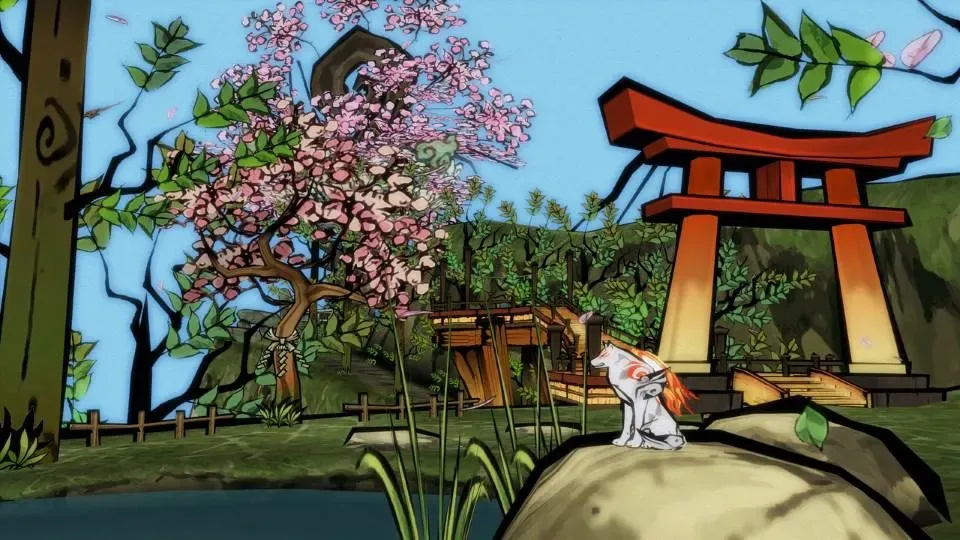
Ōkami channels classical Japanese art into an adventure that still looks timeless. As Amaterasu, the wolf incarnation of the sun goddess, you roam a woodblock‑come‑to‑life Japan restoring color to cursed fields, fishing villages, and sacred peaks. Its core trick—the Celestial Brush—pauses the world into parchment so you can paint solutions: slash foes, bloom trees, conjure wind, or bridge gaps with a stroke. The mechanic empowers creativity without ever feeling fiddly. Structure echoes Zelda’s best: puzzle‑box dungeons, sprawling overworlds, and charming companions like Issun, your tiny wandering artist. Folklore informs everything, from impish imps to colossal orochi serpents, yet the tone remains warm and playful. Combat is approachable, rewarding experimentation with divine weapons and brush combinations. Even at modern resolutions, the sumi‑e style sings, and the score’s shamisen swells are downright transportive. Ōkami isn’t merely set in Japan; it celebrates its myths, festivals, and seasonal rhythms, inviting you to repaint the world with joy rather than conquest from shrine to shrine.
6) Nioh (2017)
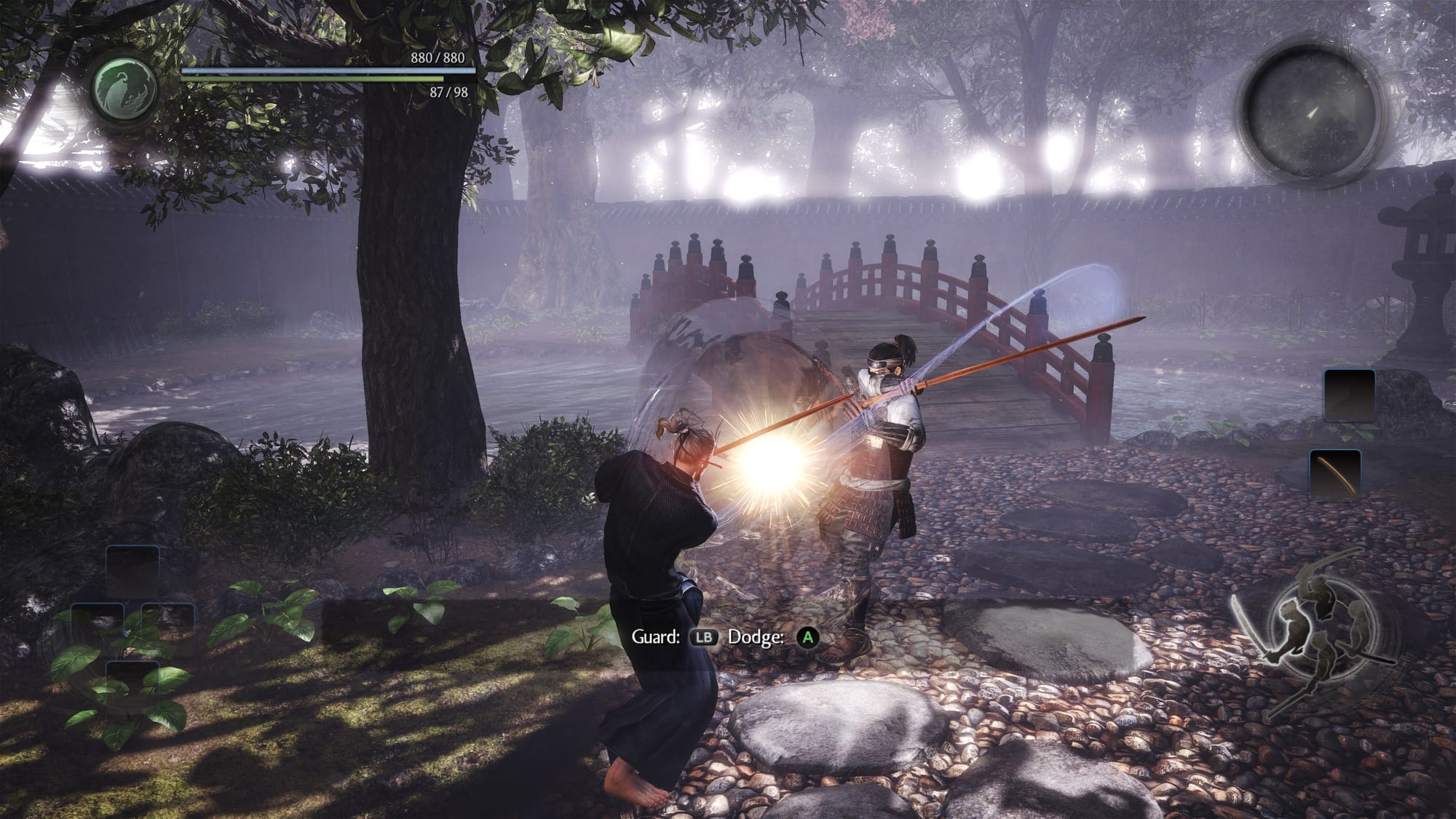
Nioh fuses Team Ninja’s blistering action pedigree with a Sengoku‑era dark fantasy where samurai clash with yōkai. As William, an outsider swordsman chasing a cunning alchemist across war‑torn Japan, you battle through mission‑based stages reminiscent of classic Ninja Gaiden structure. Combat is deep and technical: stances change attack arcs and stamina costs, Ki Pulse rewards rhythmic timing, and weapon families—from katanas and kusarigama to odachi—support distinct playstyles. Loot and light RPG systems encourage experimentation without bloating the pace. Enemy design mixes historical infantry with folklore horrors like one‑eyed oni and nurikabe walls that literally block your path until appeased. Bosses hit hard but teach cleanly, and co‑op expeditions make the grind feel communal. Levels tour real locales—Kyoto streets, coastal forts, mountain temples—tinged with twilight menace. If you crave precision over spectacle, Nioh’s dance of resource management, positioning, and burst damage is endlessly satisfying, and its sequel expands the arsenal even further. It’s demanding, but extraordinarily rewarding for disciplined players everywhere.
5) Sekiro: Shadows Die Twice (2019)
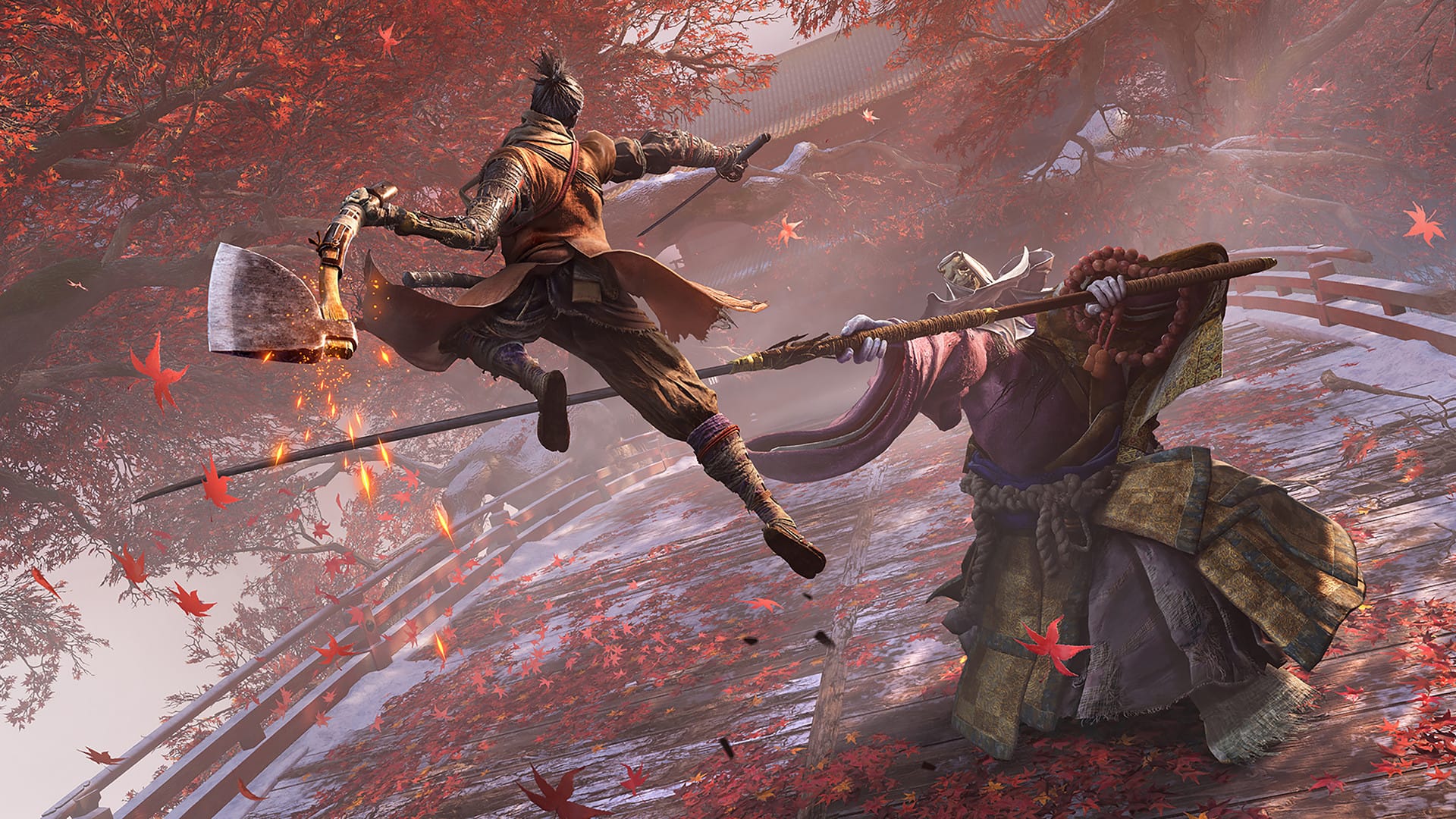
Sekiro: Shadows Die Twice distills FromSoftware’s design into a razor‑edged duel of timing and intent set in a mythic Sengoku Japan. You play the Wolf, a shinobi whose prosthetic arm houses gadgets—grappling hook, shuriken, firecrackers—that expand movement and tactics. But the heart is posture combat: clashing blades to break an opponent’s stance, then landing a decisive Deathblow. It’s demanding yet fair, rewarding meticulous study of patterns, spacing, and nerves. Level design layers vertical exploration with stealth routes across temples, castle ramparts, and misty valleys haunted by folklore terrors. Bosses—from the mounted General to the notorious Guardian Ape—become stories you’ll retell, hard‑won lessons etched in muscle memory. Unlike Souls RPG builds, progression emphasizes skill mastery over stats, making victories feel intensely personal. Sparse but affecting characters and themes of duty, resurrection, and severed destiny bind the carnage with melancholy grace. When the music swells and a perfect parry chain sings, Sekiro becomes pure sword ballet—uncompromising, exhilarating, and uniquely Japanese in spirit.
4) Ghostwire: Tokyo (2022)
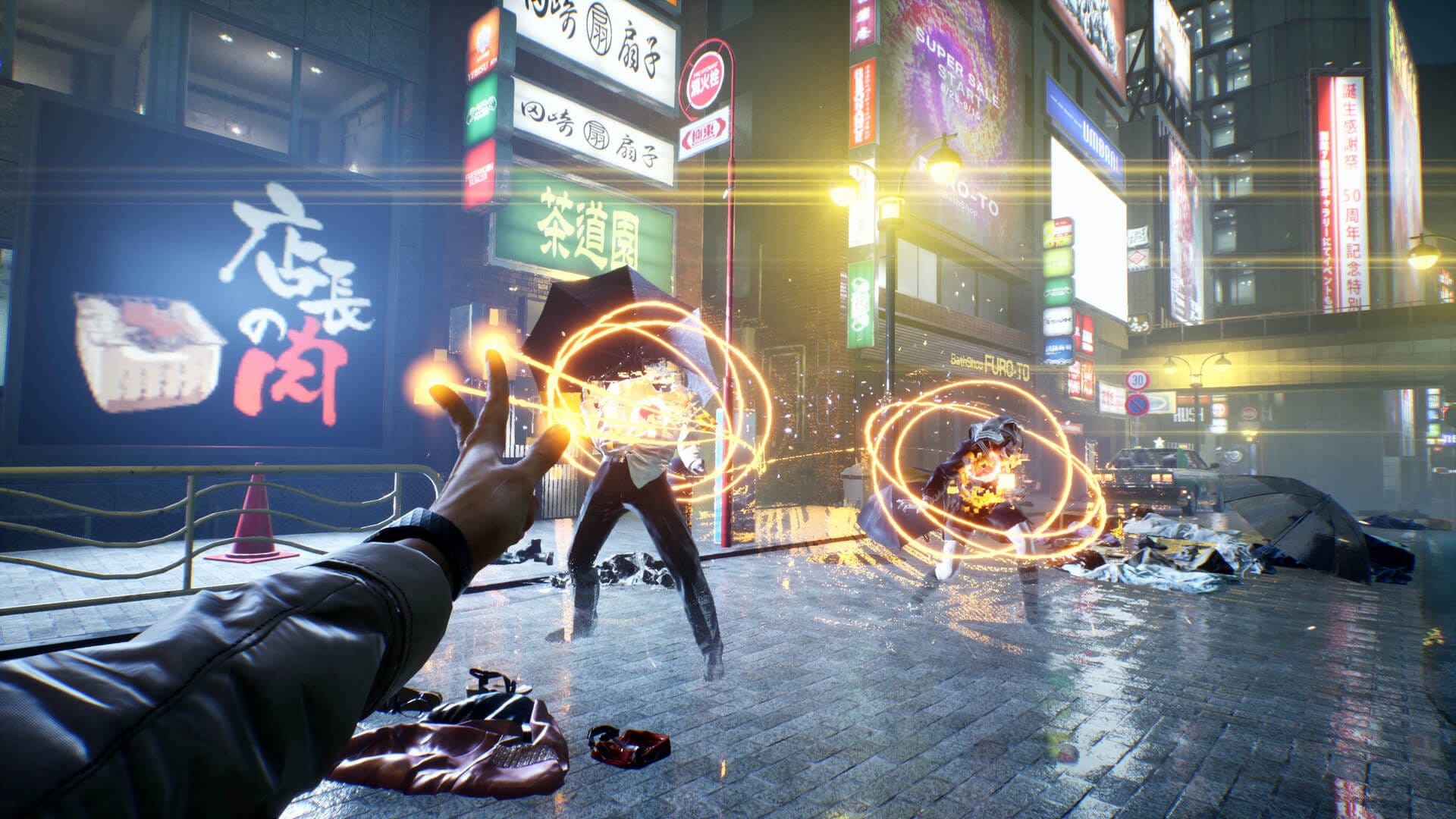
Ghostwire: Tokyo offers a moody, first‑person paranormal tour of Shibuya emptied by a supernatural event, where folklore yokai replace commuters at the scramble. As Akito, possessed by a gruff spirit detective, you wield finger‑weaving “Ethereal Weaves” and spells to cleanse torii gates, rescue lost spirits, and unravel a masked villain’s plan. The combat is breezy—more ghostbusting than horror—yet it shines in atmosphere and urban detail: alleys choked with cables, konbini aisles frozen mid‑shop, school yards lit by rain‑soaked neon. Side quests lean wholesome, helping lingering souls tie loose ends, while optional collectibles teach folklore without homework vibes. It’s one of the few games where reading signs, petting stray dogs, and taking shrine selfies feels as important as main missions. Tango’s love for the city is palpable, and fast travel across rooftops and subway arteries makes exploration relaxing. A cozy ghost story wearing a modern FPS coat, Tokyo‑to its marrow. The Spider’s Thread update adds challenges and quality‑of‑life polish for completionists.
3) Persona 5 (2016)
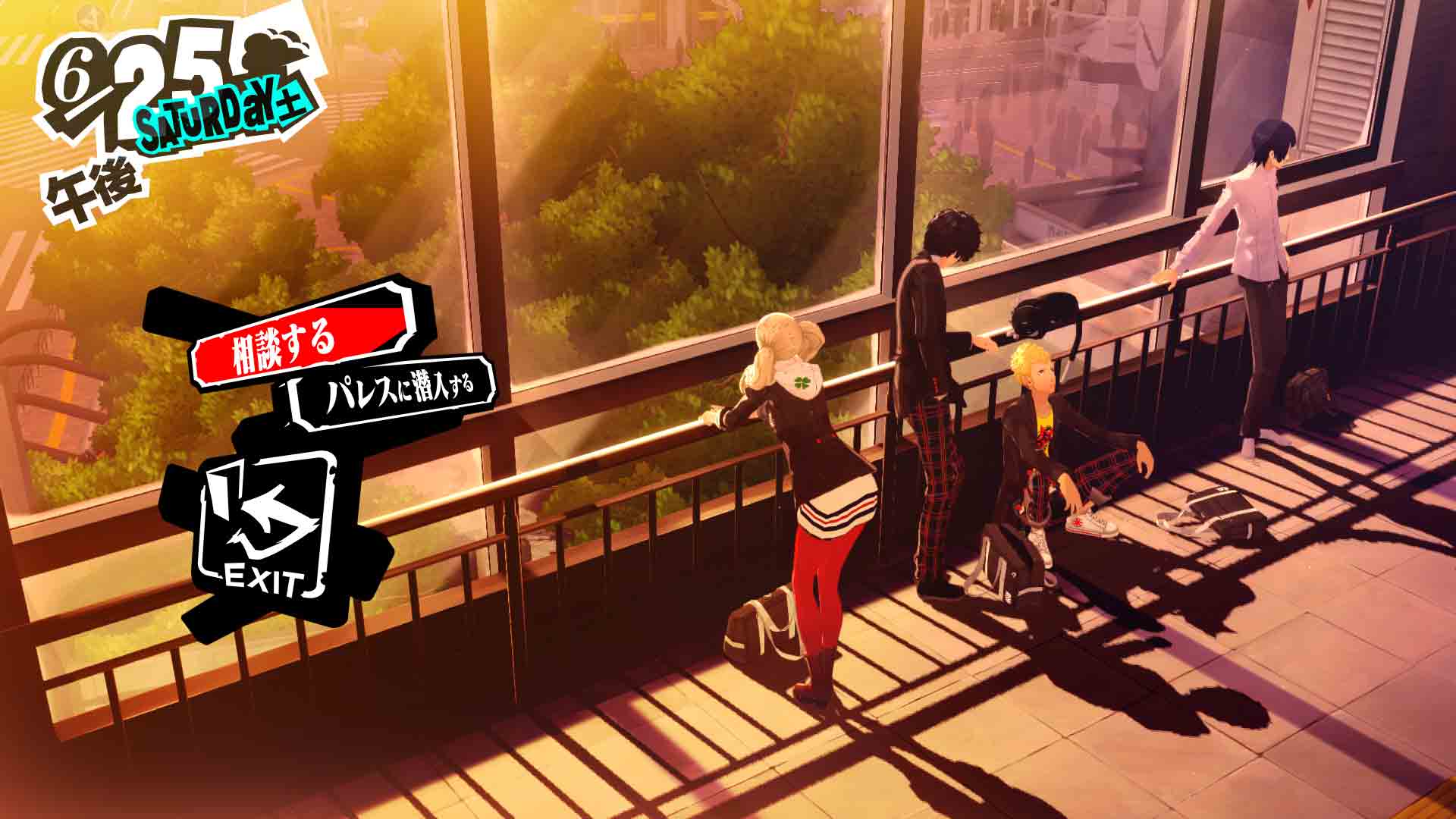
Persona 5 turns modern Tokyo into a stylish dungeon of corrupt adults and stolen hearts. As a wronged transfer student leading the Phantom Thieves, you balance high school life—studying for exams, part‑time jobs, friendships—with daring heists into cognition‑warped “Palaces.” Its turn‑based combat pops with baton passes, elemental exploits, and negotiation, while the calendar system forces meaningful choices about how to spend each day. The city isn’t just backdrop; Shibuya scramble, Kichijōji jazz bars, and cramped ramen joints become ritual stops that mirror a teen’s sense of scale and possibility. Social Links (Confidants) unlock new abilities and heartfelt moments, grounding the rebellion in empathy. Art direction deserves its own award: bold UI swishes, acid‑red menus, and acid‑jazz swagger make simply opening a map feel cool. The original campaign already satisfies; Royal’s new semester, characters, and Palace deepen relationships and themes. Few RPGs make contemporary Japan feel this vibrant, personal, and political without sacrificing fun. It lingers long after the credits roll.
2) Yakuza 0 (2015)
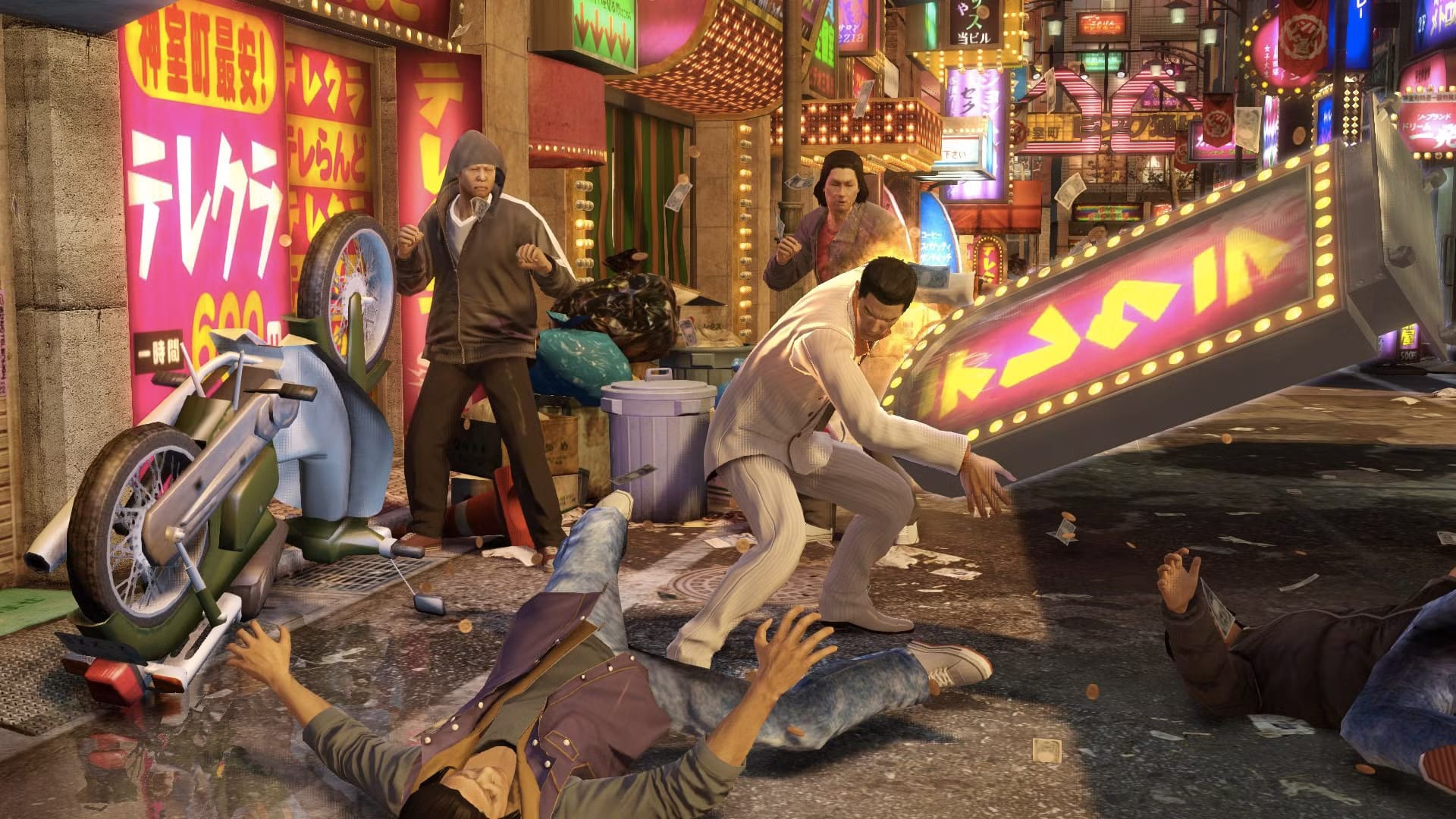
Yakuza 0 drops you into bubble‑era 1988 Tokyo and Osaka, where neon money rains and bad decisions come cheap. As rookie enforcer Kazuma Kiryu and cabaret‑club fixer Goro Majima, you ricochet between heartfelt crime drama and joyous absurdity, a tonal dance the series perfected here. Streets bustle with dense side stories—help a dominatrix find her voice, sing karaoke, dismantle predatory real‑estate schemes—each feeding into character growth and new abilities. Combat spans multiple switchable styles per protagonist, from Kiryu’s bruising Brawler and bone‑crunching Beast to Majima’s dizzy Breaker capoeira. Money doubles as experience, encouraging entrepreneurial hijinks to fund savage upgrades. Mini‑economy modes—Real Estate Royale and Cabaret Club—become addicting management sims amid the chaos. More than most games, Kamurocho and Sotenbori feel lived‑in: narrow alleys hide shakedowns, arcades preserve era‑perfect Sega cabinets, and beef‑bowl joints become dependable safe havens. Yakuza 0 is the best starting point for Like a Dragon’s vast saga and an unbeatable tour of nightlife Japan. after dark, unforgettably.
1) Ghost of Tsushima (2020)
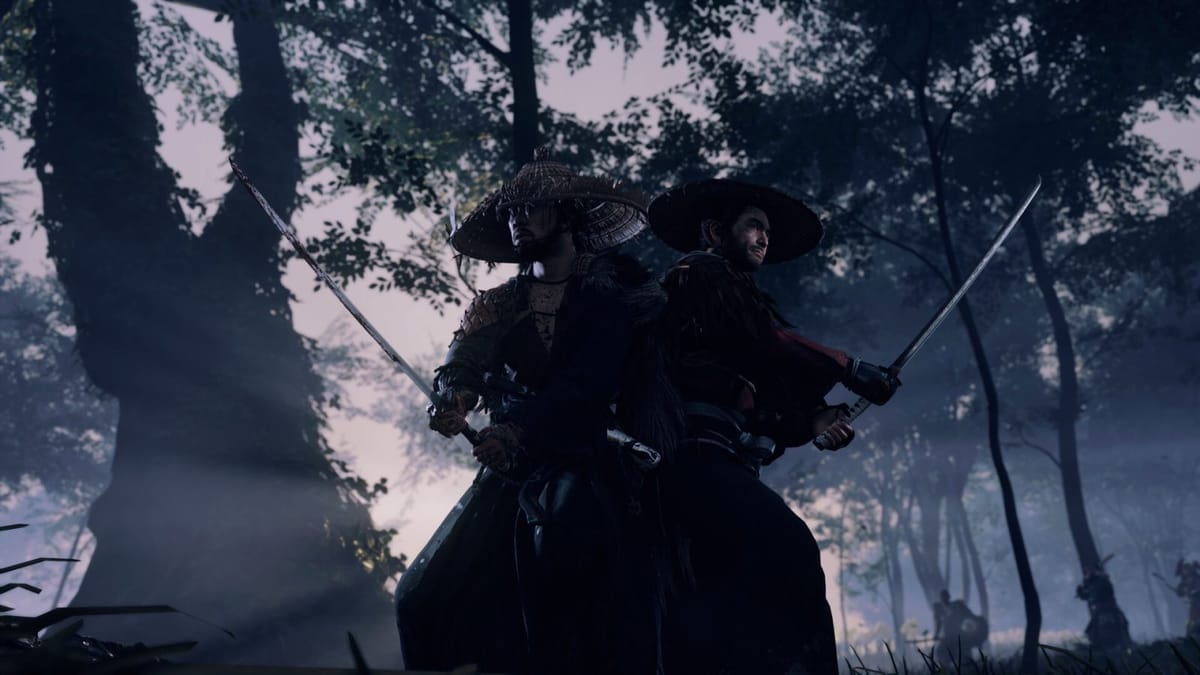
Ghost of Tsushima is a sweeping open‑world samurai epic set during the first Mongol invasion of Japan in 1274. You play Jin Sakai, a stoic noble forced to abandon strict bushidō to save his homeland, and that inner conflict powers both story and systems. Combat invites you to duel honorably with crisp stances and perfect parries or embrace the “Ghost” approach—smoke bombs, kunai, misdirection—creating a satisfying loop of choice and consequence. Tsushima itself becomes the star: pampas grass ripples, foxes guide you to shrines, and wind replaces a minimap, nudging you toward discoveries without clutter. Photo mode, haiku, and bamboo strikes make exploration feel like pilgrimage between duels. The story lands with understated sincerity, backed by performances that honor samurai cinema. Whether you’re slicing through a moonlit standoff or sneaking through a seaside fort as storms roll in, the fantasy of being a protector is irresistible. Director’s Cut adds Iki Island, sharpening combat, extending character arcs, and deepening Jin’s past.





